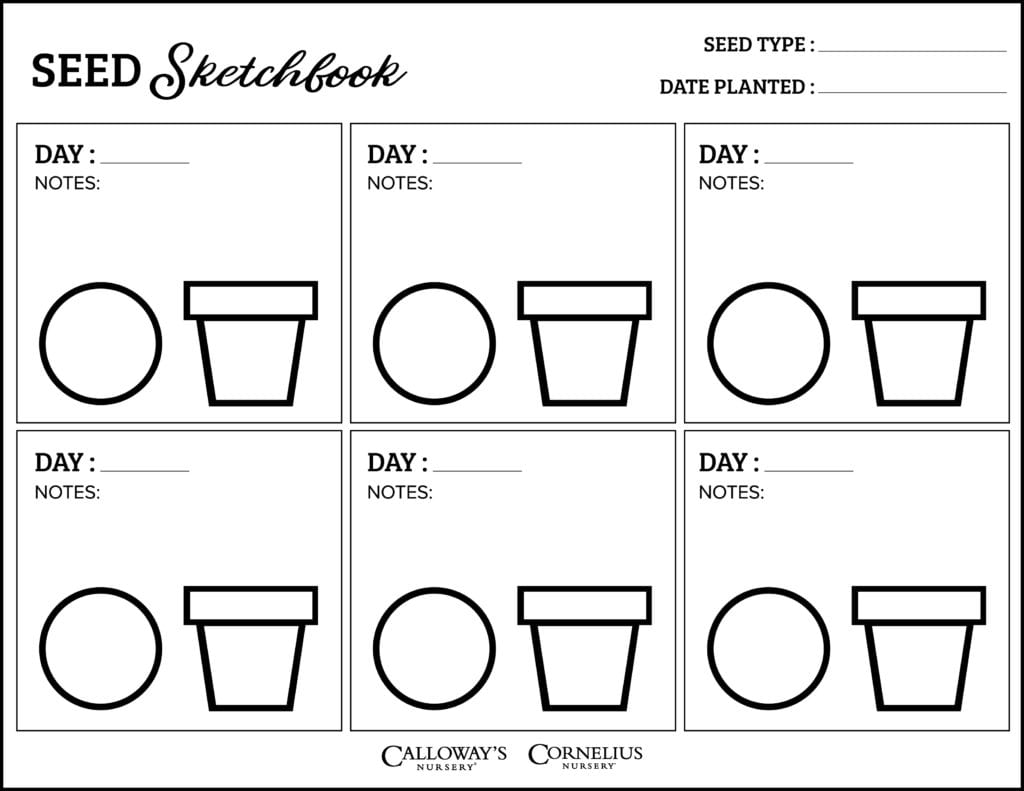Planting to provide for your family is essential to creating a sustainable future. Sow the seeds of victory and reap the rewards by growing vegetables and planting to support our environment. Victory Gardens are no longer a concept of the past; starting a Victory Garden will help our world grow a stronger root system and will help us all focus on what is important. Spring is here and its beautiful outside! Get outdoors with your family and grow together with seeds! Planting seeds gives you control over the growing process and it’s a cost-effective approach to enjoying fresh edibles and spring color. Learn tips on gardening with seeds and try our seed planting activity that you and your kids will love!
THE HISTORY OF VICTORY GARDENS
Victory Gardens were created to relieve tensions during a time when essentials where in high demand. They produced a solution and built a more positive and sustainable life for the people of our nation.
During World War I, a food crisis hit the world and America formed a plan to help. The National War Garden Commission set forth the mission to the American people to “Sow the Seeds of Victory”. Americans were encouraged to contribute to the effort by planting fruits and vegetables as a means of supporting their families and allowing America the ability to support and feed the troops.
During World War II, this concept re-emerged. Families on the American home front worked together to do their part and began their harvest. During this time, it was estimated that over 20 million Victory Gardens were planted producing a plentiful harvest of 10 million tons of fresh fruits and vegetables. Communities came together to ensure each home was fed, school lunches were provided, and our troops were supported.
Victory Gardens boosted moral throughout the country. They gave Americans a sense of relief, knowing that their families and their troops had access to quality nourishment. Victory Gardens grew more than just vegetables, they produced purpose for Americans during times of unease. They paved the way to a successful, sustainable, and unified life for our country and our homes. Start your Victory Garden now and plant the seeds for success and sustainability for you and your family!
THE BENEFITS OF PLANTING SEEDS
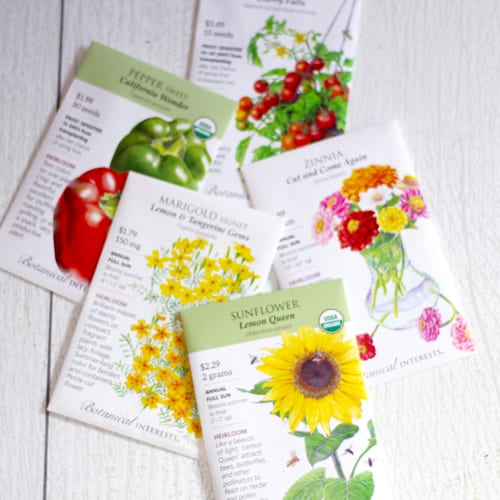
Grow Organically
Know exactly where your food comes from by planting seeds. When you plant with seeds, you control the whole growing process, from the soil used to the fertilizers. Provide your family with fresh produce and peace of mind.
Save Money
Planting with seeds is the most cost-effective way to grow fresh edibles and color. A packet of seeds is affordable, especially for the quantities of plants that you can grow from each pack. Growing a productive garden of fresh edibles will feed your family for far less than buying it from the grocery store.
Flexibility
Many seeds are recommended to start their growing process indoors. This gives you the time and flexibility to produce a sturdy root system before they are planted in your garden. You get a head start for planting success and the opportunity to have some control over Mother Nature.
Rewarding & Fun
Grow in your confidence in gardening with seeds. Watching the seeds sprout and develop into strong and healthy plants is an accomplishment. It will teach you many valuable lessons about life and give you a since of pride, relaxation, and contentment.
SEED SKETCHBOOK AND PLANTING ACTIVITY
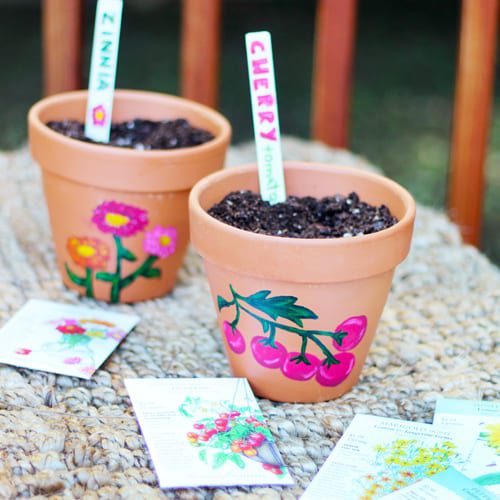
Make education fun with gardening! Work together and get creative planting seeds! Teach responsibility and educate your kids about our environment and the benefits of supporting our local ecosystems. Learn patience together and build a better connection to the Earth. Let’s paint our pottery, plant our seeds, and watch them grow!
Step 1: Supplies
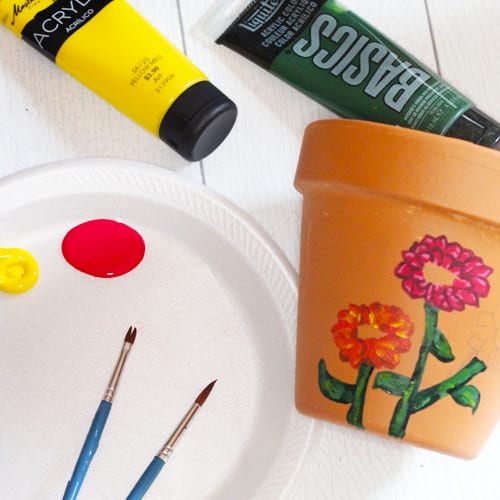
To get started, you will need the following:
- Terra cotta pottery
- Botanical Interests® Seed Packets
- RapiClip® plant labels
- Calloway’s Premium Potting Soil
- Crafting supplies like paint, colored pencils, crayons
- Mist spray bottle
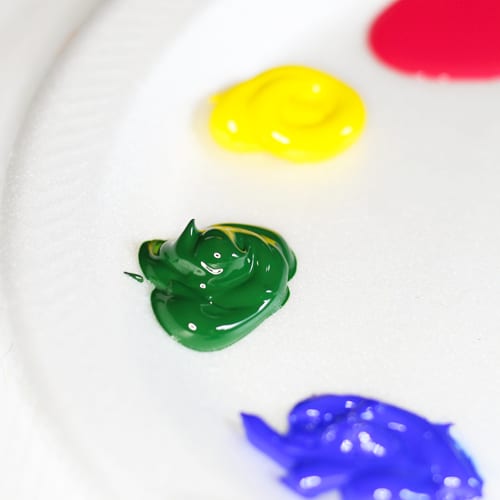
Step 2: Decorate your Pottery and Plant Labels
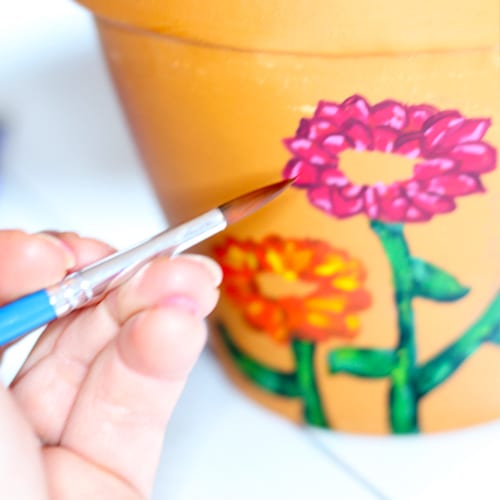
Paint what you are planting! Have each family member select a pack of seeds. These seeds will become their responsibility to care for and watch grow. Take some time to talk about the variety they are planting and discuss the details of the plant like:
- Does your plant flower or grow produce?
- How will your plant look in full bloom?
- What do the leaves look like?
- What color are the blooms?
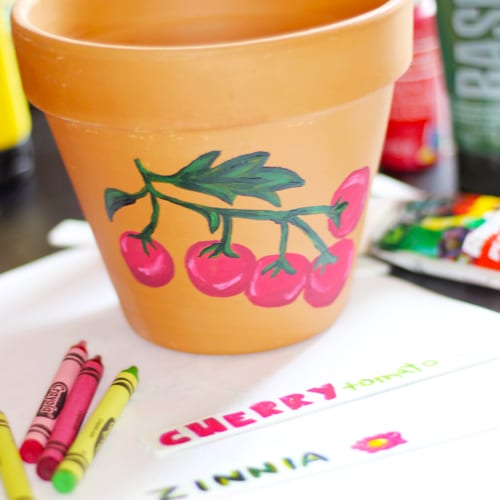
After studying the plant, start painting! Use creativity to educate and engage. Paint what you are growing and how you think it will look when it is fully established. This will create a visual goal to work towards accomplishing throughout the growing process.
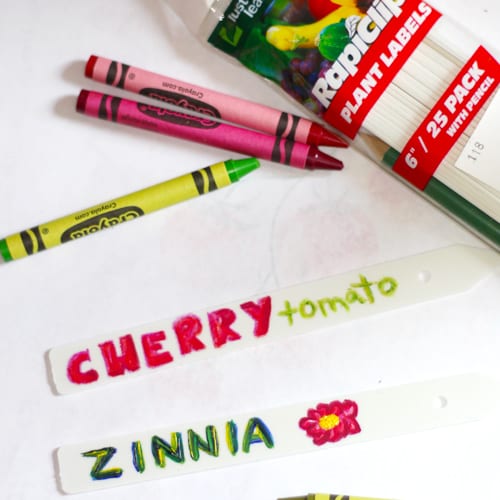
Then, create a plant label that is personalized for your seed selection. You will move this label to your garden bed when your plants are ready to be transplanted so you know what is growing and where.
Step 3: Plant your Seeds
It is time to grow! Start planting with the Potting Soi and use Calloway’s Premium Container Potting Soil has all the ingredients your seeds need for proper moisture control to grow a strong and healthy root system.
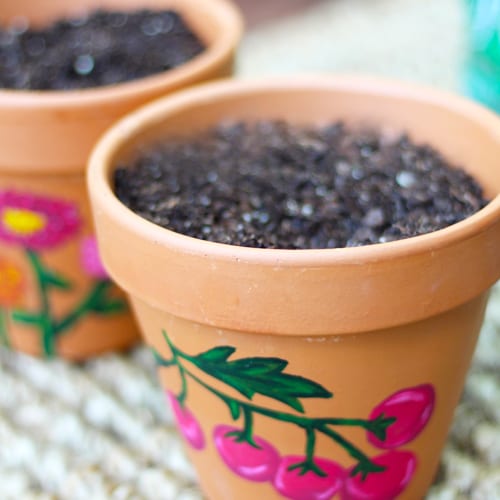
Put the soil in a large bin and let your kids scoop their own soil. Have them count how many scoops they used, especially for younger kids so they can practice their numbers.
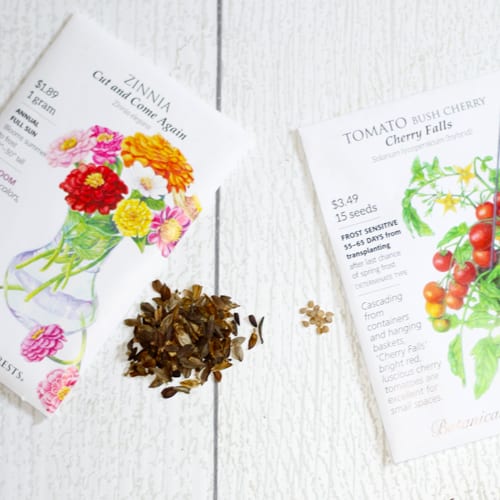
Remove the seeds from the packet and take some time to compare all the different varieties of seeds. Examine the shape, size, and color. Explore the differences of edible seeds vs. flower seeds.
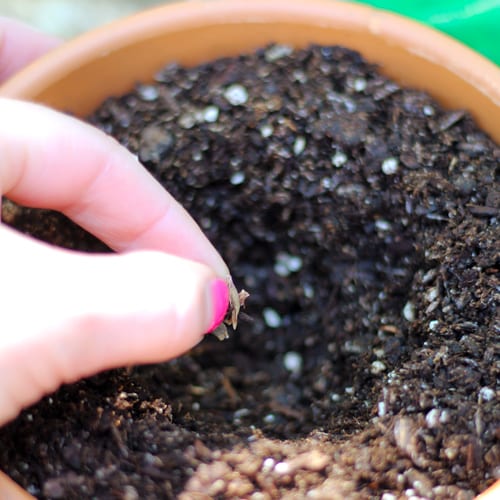
Then, pinch 2-3 seeds and place it in the soil. Add more potting soil on top to cover the seeds like a blanket.
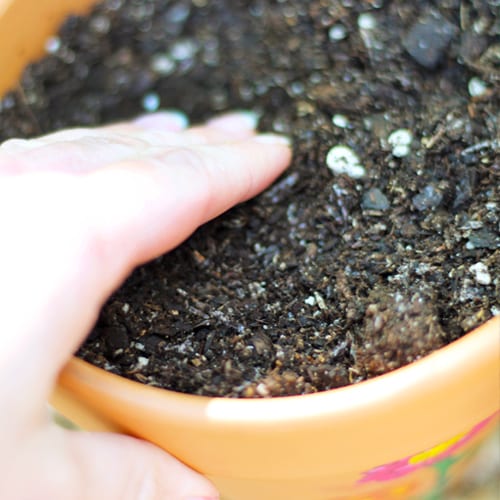
Seeds need water and light to grow. Mist the soil with a spray bottle to give the soil the proper moisture that your seeds need. Watering the soil directly will shift the seeds in your container. Add your decorated plant label and place your containers by a sunny windowsill.
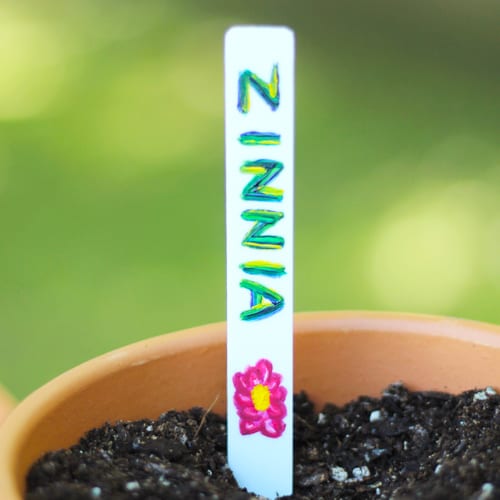
It is important to give your seeds the light they need to start growing and to keep your soil at the proper temperature that is required for growing your seed varieties.
Step 4: Seed Sketchbook
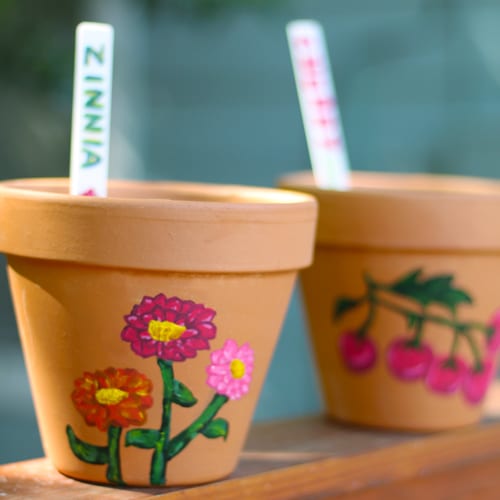
After planting is complete, it is time to watch your seeds sprout and grow. Get the kids and spend some time observing your plant. Take notes of the care steps you have taken for each day and any changes you notice. Sketch out the developments and record the number of sprouts from a top and side view. Once the sprouts are really showing, take measurements to keep record of the growing rate.
CLICK HERE TO PRINT YOUR SEED SKETCHBOOK TEMPLATE!
This is a great project that can continue well into the summer. It will teach everyone how to grow in responsibility and how to grow for success.
PLANTING TIPS FOR SEEDS
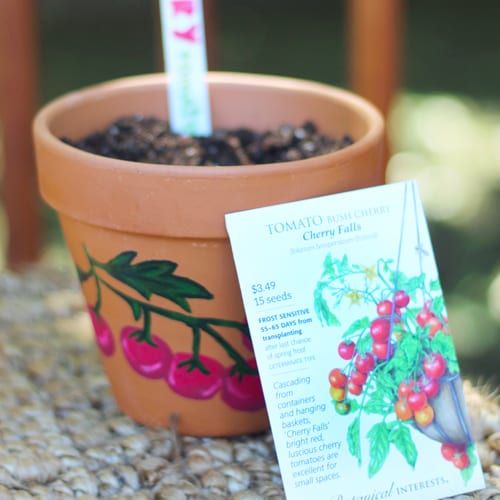
Easy Seeds to Grow
For your planting success, here are some great varieties of seed to grow. Starting with quality seeds like the seeds from Botanical Interests® and varieties like:
- Cherry Tomatoes
- Peppers
- Cucumbers
- Zucchini
- Beans
- Corn
- Carrots
- Zinnias
- Marigolds
- Sunflowers
- Cosmos
Direct Sowing VS. Planting Indoors
When planting seeds, there are 2 ways to get started and it will depend on the variety of plant. The package instructions will provide these details and requirements. Direct sowing is planting seeds directly in your garden bed or you can start by planting indoors. With direct sowing, the soil temperature will determine when you plant your seeds outdoors while planting indoors gives you control over the soil temperature and gives you a leg up on your plant’s maturity by the time it is planted in the ground. Soil temperature is the most important factor for successful seed growth.
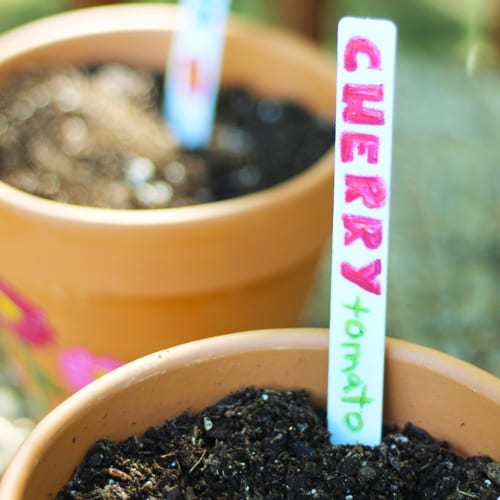
When grown indoors, your plants will let you know when they are ready to be transplanted outdoors. The plants will have several sets of leaves and a strong root system. Once moved outdoors, water in thoroughly as seedlings can dry out quickly, especially during our Texas summers.
How to Plant Seeds Outdoors
Determine the location of your garden and plan out your planting area. Plant in an open area that receives at least 5-7 hours of sunlight daily. Avoid planting in areas that easily puddle or flood when it rains. Plant taller plants in the back of your garden bed to avoid over shading the other plants.
Before you start planting, remove all weeds, debris, and rocks in your garden. Use an organic rich compost like Calloway’s Organic Compost and start your bed off right with the added benefit of Expanded Shale. Expanded Shale is a light and porous soil amendment. It improves the aeration and drainage in your soil.
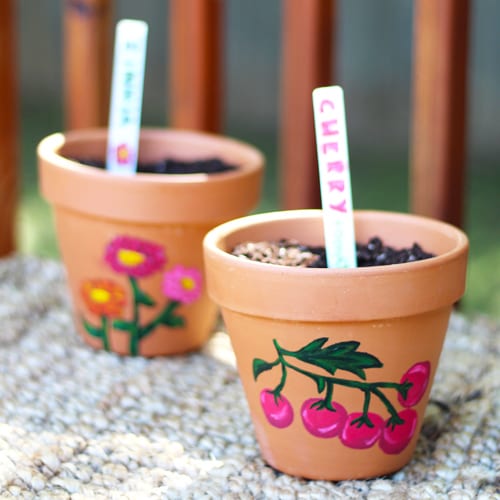
Start by spreading about 3 inches of Expanded Shale onto the soil. Then, till the top layer of existing soil with 3 inches of Calloway’s Organic Compost. Calloway’s Organic Compost helps improve drainage and stimulates beneficial microorganisms for plant growth. Smooth the surface and start planting. When you are finished planting, always water in thoroughly.
Plant your seeds at the depth recommended on the seed packet. Use 1 to 2 fingers width of space between each seed and keep the soil moist. Germinating will vary by seed variety, but sprouts are expected to appear within 5 days to 2 weeks.
When the seeds start to sprout, start the thinning process. Thinning creates room for growth. Gently, pull out the unwanted seedlings, leaving the healthy ones untouched. This is a good method for creating air movement and circulation around the roots of flowers and leafy vegetables. Root crops like beans, squash, and cucumber need a more careful approach. These should be thinned as soon as possible before the roots start to intertwine to avoid root disturbance.
As vining plants start to grow, add in stakes and trellises to create support for producing heavy fruits.
Sow the seeds of fun and education together as a family and do your part in growing for a more sustainable life.
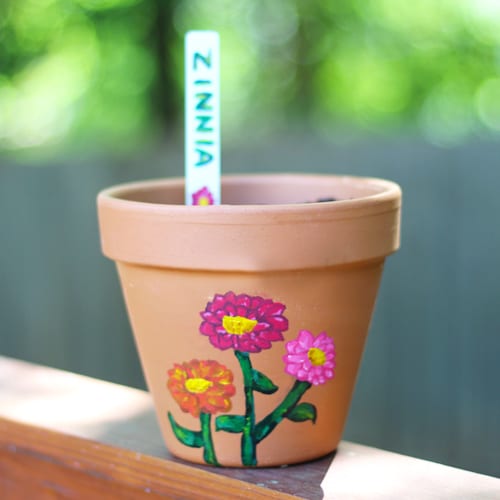
At Calloway’s and Cornelius, we are here for all your gardening needs! Visit us today and explore our entire collection of seasonal blooms, fantastic pottery, indoor plants, fresh vegetables, stately trees and shrubs, and so much more! Shop one of our 28 neighborhood stores, serving our loyal customers for over 35 years.
Have questions? Ask our Texas Certified Nursery Professionals; they are here to help!

